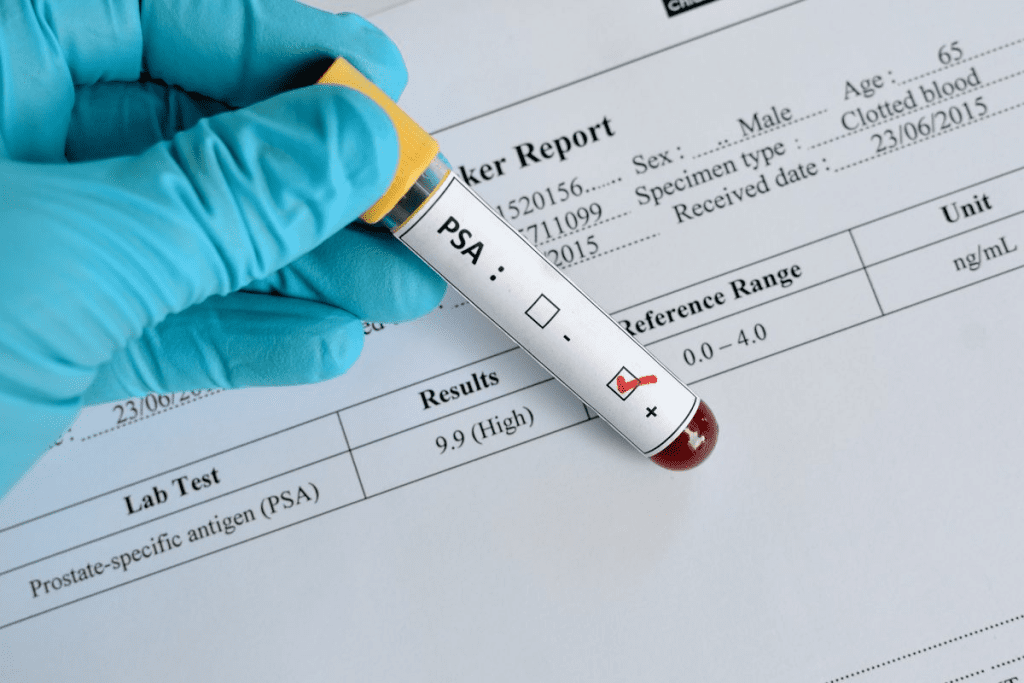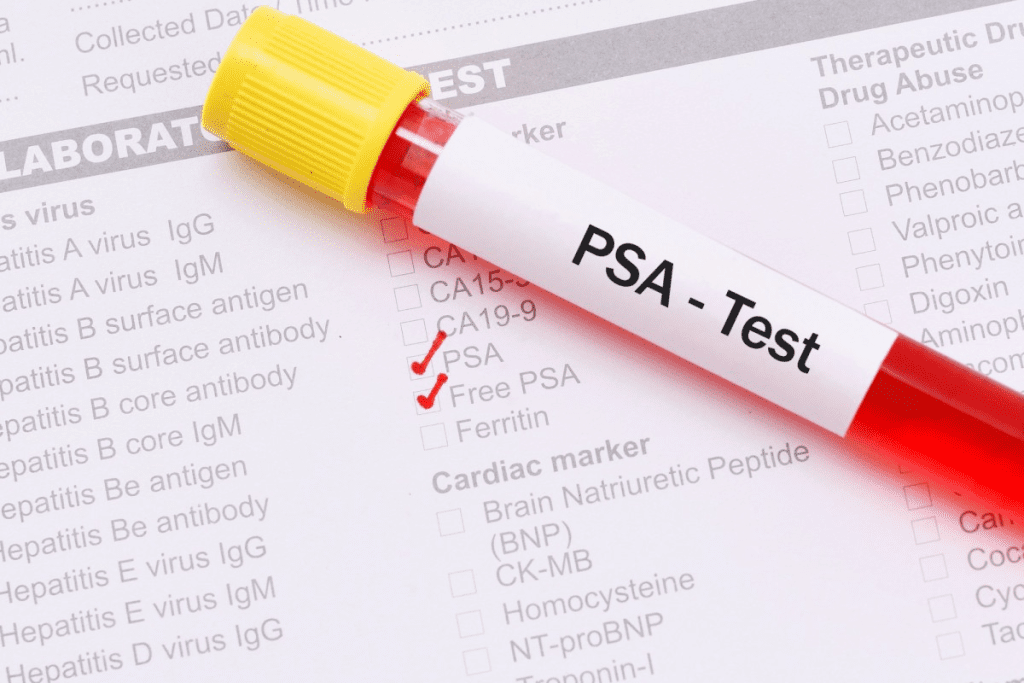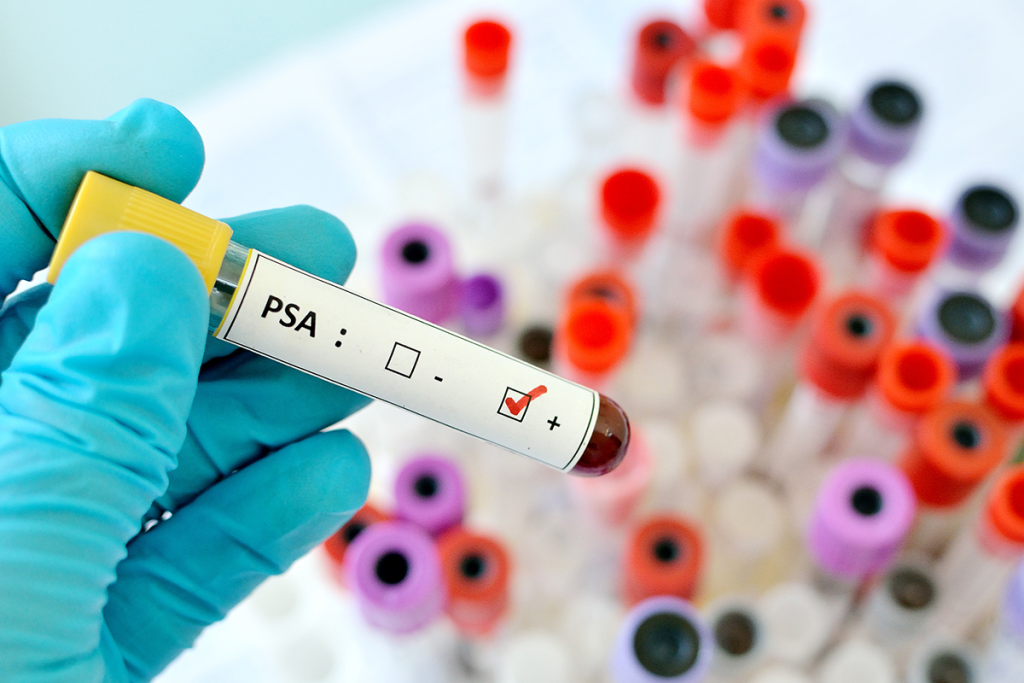Last Updated on November 25, 2025 by
Knowing what is good PSA level prostate is key for prostate health and even for trading card collectors as an analogy. For prostate health, a low PSA level means better outcomes. Studies show that PSA levels between 1-3 ng/mL are considered safe, while levels over 4 ng/mL might require further testing.

For trading cards, PSA grading checks a card’s condition. It helps collectors know their card’s true value. A high grade can make a card more valuable and sought after.
PSA grading is key for checking trading card condition and realness. It greatly affects their value. Knowing the PSA grading system is a must for collectors and investors.

The Professional Sports Authenticator (PSA) is a top name in trading card grading. PSA grading gives a standard check on a card’s state. This helps collectors see their items’ true worth.
PSA makes sure cards are real and in good shape. This boosts their value and trustworthiness.
For collectors, getting a card graded is important. It gives a reliable look at a card’s state. This can really change its worth.
Higher grades mean cards are worth more. PSA grading makes comparing cards easier. This is because it sets a standard.
Graded cards are easier to sell. This is true for rare or expensive cards. Knowing they’re real and in good shape helps with sales.
In short, the PSA grading system is key in the collectibles world. It offers a reliable way to check cards’ condition and realness. Knowing this system helps collectors and investors in the complex market.
The PSA grading scale is a detailed system for checking the condition of collectible cards. It’s key in figuring out if a card is real and how much it’s worth in the market.
Cards graded from PSA 1 to 3 are in Poor to Fair shape. They have big problems like creases, tears, or worn corners. The image might be off-center, and the card could be damaged or changed.
Cards graded from PSA 4 to 6 are in Good to Excellent shape. They have fewer flaws than lower grades but might have some issues with centering, corners, or edges.
Cards graded PSA 7 or 8 are Near Mint. They have minor flaws but are mostly in great shape, with good centering and sharp corners.
A PSA 9 grade means a card is in Mint condition. These cards are almost perfect, with perfect centering, sharp corners, and pristine edges. PSA 9 cards are very valuable to collectors.

image to be corrected’
Knowing the PSA grading scale is key for collectors. It helps them make smart choices when buying, selling, or trading cards. By understanding each grade, collectors can better judge a card’s condition and value.
For collectors, knowing what makes a good PSA grade is key. A good grade balances the card’s condition and value. It’s shaped by industry standards, the grading scale, and the card’s era.
The Professional Sports Authenticator (PSA) grading scale sets the standard for investment-grade cards. Cards graded as PSA 9 or PSA 10 are in Mint or Gem Mint condition. These are highly sought after and can fetch a high price.
PSA says a grade of 10 means the card is in Gem Mint condition. It’s almost perfect. Cards with such high grades are very valuable and in demand.
For collectors, finding the right balance between a card’s grade and value is important. A higher grade can increase a card’s value, but the cost of grading and the return on investment matter. Cards with lower grades can also be valuable, depending on their rarity and demand.
image to be corrected’
The value of a card isn’t just about its PSA grade. Rarity, condition, and demand also play a role. Collectors need to consider the cost of grading against the possible increase in value.
Standards for good PSA grades vary by card era. Vintage cards from the early 20th century might be more lenient in grading due to their age and printing technology.
Modern cards, though, need to be almost perfect to get high grades. Knowing these differences helps collectors make better investment choices.
Knowing what affects PSA grading is key for collectors. When you send a card for grading, several important things are checked. These help decide the card’s final grade.
Centering is very important for a high PSA grade. Graders look at how well the image is placed on the card. Cards that are perfectly centered usually get higher grades.
The state of a card’s corners and edges matters a lot. Graders check if the corners are sharp and the edges are intact. Cards with sharp corners and no edge damage tend to get better grades.
The surface quality of a card is also very important. Graders look for any surface issues like creases or print defects. Cards with no surface problems usually get top grades.
Print defects can really affect a card’s grade. Issues like misregistration or ink smudges are common. Graders carefully check these, and they can lower the card’s grade.
Key considerations for print defects:
By knowing these factors, collectors can better prepare their cards for PSA grading. This can help them get higher grades and increase their card’s value.
For collectors, knowing the cost of PSA grading is key to getting the most out of their investment. The Professional Sports Authenticator (PSA) is a top choice for grading collectibles. But, the price can change based on several factors.
PSA has different prices for its grading service. These prices depend on the service level and how much the card is worth. There are options for every budget, from economy to express services.
The service level you choose affects how fast you get your card back. Economy services take longer, but express services are quicker for a fee. Knowing these options helps collectors decide what’s best for them.
If you need a card graded fast for an event, express service might be the better choice. But, if you’re not in a hurry, a cheaper option could be better.
Grading is worth it when it boosts a card’s value more than the cost. For rare or high-value cards, PSA grading can increase their authenticity and value. But, for common cards, the cost might not be justified.
Collectors need to think about the card’s condition, rarity, and demand. For some, the assurance and authenticity from PSA grading are worth the cost, even if it doesn’t make a lot of money.
To avoid counterfeit cards, collectors must know how to verify and research PSA graded cards effectively. It’s important to check if a PSA graded card is real. This ensures that your investment is genuine and valuable.
The PSA cert lookup tool is a valuable resource for collectors. It helps verify the authenticity of graded cards. By visiting the PSA website and entering the certification number, collectors can confirm if their card is genuine.
To use the PSA cert lookup tool, collectors should follow these steps:
The PSA label and certificate provide important information about the graded card. The label contains the certification number, grade, and other details. The certificate provides more information, like the card’s condition and notable features.
Collectors should carefully review the PSA label and certificate. This ensures they understand the card’s grade and authenticity. Any discrepancies or inconsistencies should be investigated further to verify the card’s legitimacy.
Counterfeit PSA slabs can be sophisticated, making them hard to identify. But, there are several signs to look out for, including:
By being aware of these signs, collectors can better protect themselves from counterfeit PSA slabs. This ensures their investments are secure.
The PSA grading system is key in figuring out what collectible cards are worth. For those who collect and invest, knowing how PSA grades affect value is vital. This knowledge helps in making smart choices.
The worth of a card can change a lot between PSA grades. For example, a PSA 9 (Mint) card is often worth more than a PSA 8 (Near Mint-Mint) card. The jump in price is not always the same. This is because higher grades are rarer, and people are willing to pay more for them.
Let’s say you have a rare baseball card. If it’s a PSA 8, it might sell for $1,000. But if it’s a PSA 9, it could go for $5,000 or more. This big difference shows how important grading is in setting a card’s value.
To find out what PSA-graded cards are worth, collectors can check Card Ladder. Card Ladder has a big database of card sales. This lets collectors see how prices change with different PSA grades. By looking at these sales, collectors can figure out a card’s fair market value and make smart choices about buying or selling.
These tools keep collectors in the loop with market trends and price changes.
Different PSA grades offer different chances for investment. Generally, cards with higher PSA grades (PSA 9 and above) are seen as better investments. But, the card’s condition, rarity, and demand also matter a lot in its investment value.
“The value of a card is not just in its grade, but in its rarity, condition, and the demand for it in the market.”
” Collectors’ Insight
For those looking to buy or sell graded baseball cards, finding local dealers is key. We suggest looking online for local card shops or stores that specialize in graded baseball cards. Online marketplaces and forums also help connect collectors with sellers worldwide.
By looking into these options, collectors can find graded baseball cards nearby or connect with other collectors and dealers.
Knowing the PSA grading scale is key for collectors. It helps them make smart choices when buying, selling, or trading cards. With about 15 million cards graded, the value of professional grading is huge.
A card’s grade can really change its worth. For example, a Michael Jordan rookie card graded at 10 sold for over $2 million. This shows how important a good grade is.
Understanding the difference between grades, like 9 and 10, helps collectors get the best deal. For more info on PSA grading, check out Card Chasers MTL. It can help you make better choices about PSA grading.
Smart decisions about PSA grading help collectors feel confident in the world of collectible cards. By looking at centering, corner sharpness, and surface quality, collectors can make sure their cards are graded right. This ensures they are valued fairly.
PSA stands for Professional Sports Authenticator. It’s a company that checks a card’s condition and if it’s real.
A good PSA grade is between PSA 7 and PSA 9. PSA 9 is Mint condition. The grade looks at centering, corner sharpness, edges, and surface quality.
The PSA grading scale goes from Poor (PSA 1) to Mint (PSA 9) and Gem Mint (PSA 10). It checks the card’s condition based on centering, corners, edges, and surface quality.
PSA 9 is Mint condition. PSA 10 is Gem Mint, meaning it’s almost perfect.
PSA grading costs vary. It depends on the service level and the card’s value. You can find current costs on the PSA website.
Use the PSA cert lookup tool to check cards. Knowing about the PSA label and certificate helps spot fake slabs.
PSA levels show the Prostate-Specific Antigen in blood. Lower levels are better. They’re key in prostate cancer screening and health decisions.
Use Card Ladder to find a PSA graded card’s market value. It helps compare prices between grades.
High-graded PSA cards, like those in Mint condition, can be a good investment. But, it’s important to know the market trends.
Look online for local card shops or use online marketplaces. Card Ladder can also help you compare prices.
Babjuk, M., Burger, M., Compérat, E., et al. (2020). European Association of Urology Guidelines on Non-Muscle-Invasive Bladder Cancer. European Urology, 76(5), 639“657. https://pubmed.ncbi.nlm.nih.gov/32451306/
Subscribe to our e-newsletter to stay informed about the latest innovations in the world of health and exclusive offers!